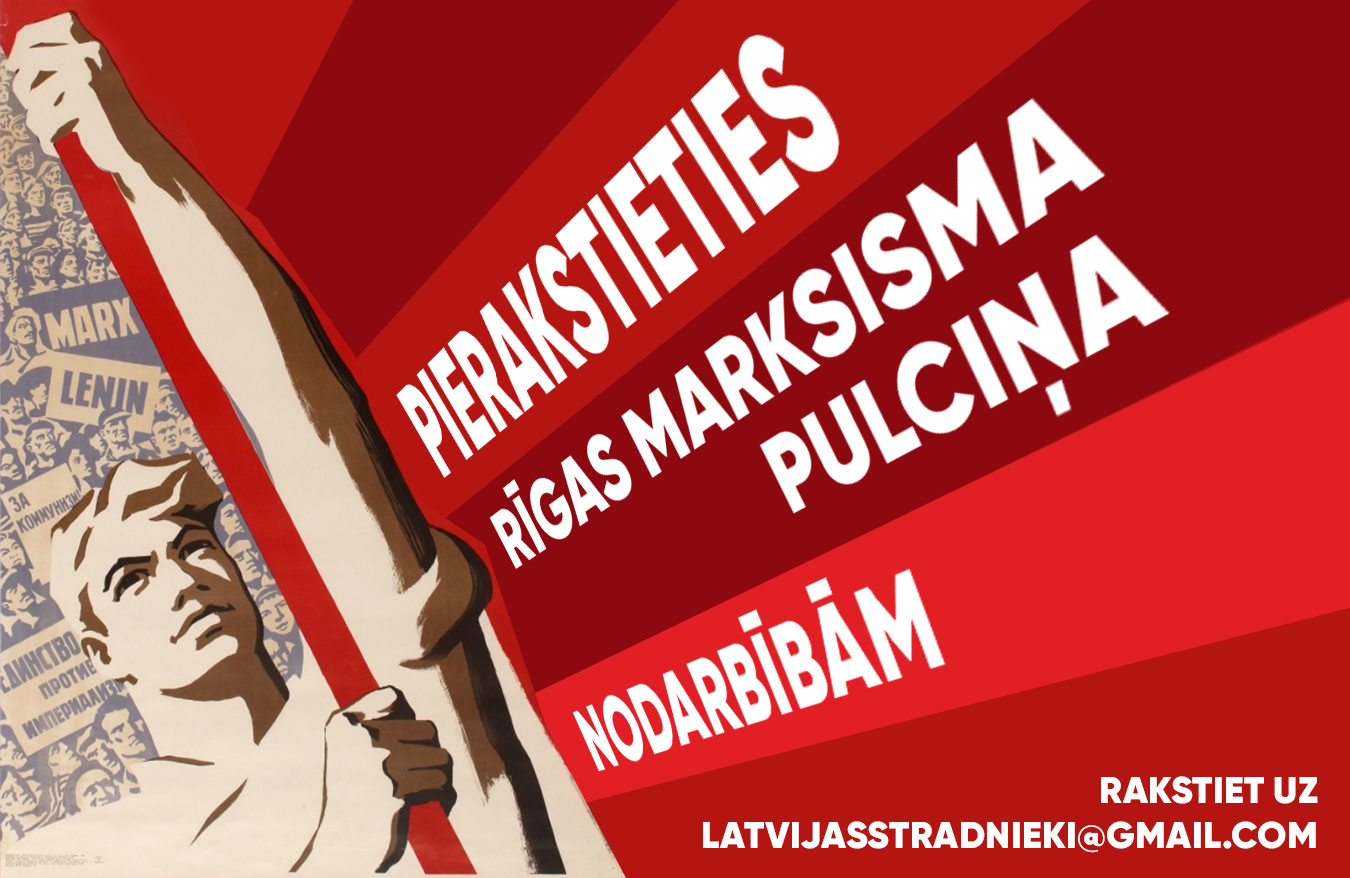When a question arises whether there is a working class in Latvia, emotional statements are usually made: “Yes, there is!” Or “No and can not be!” and their authors resort to rhetoric to prove their opinions.
But in all socio-economic issues, the decisive argument is always the numbers. Maths is the queen of all sciences, so why don't we use it?
The largest number of digital indicators in Latvia is collected by the state. Some of them are published and publicly available, for example, on the Internet on the site Central Statistical Office. We will use this data, not forgetting, of course, it is incomplete and inaccurate.
In the section “Population and Social Processes” we draw attention to two subsections – “Employment and unemployment – Main indicators” and “Employed and vacant workplaces, paid working time – The main indicators.” What we find in them?
In 2016, the number of “economically active population” ranged (quarterly) from 486,100 to 495,800 men and from 493,600 to 499,800 women, aged 15 to 74 years. Such a large upper age limit is surprising, but data for age from 15 to 64 years are also given. Accordingly, the “economically active” men of this age in 2016 numbered from 472,500 to 481,400 people and the “economically active” women from 477,100 to 481,300 people.
Let's take the smallest numbers on purpose – 472,500 men and 477,100 women, total 949,600 people.
Among these people at least 875,601 in 2016 were “economically engaged”, which means either employed or self-employed (here and further without explanation we immediately take the smallest of the quarterly indicators). Officially registered unemployed in 2016 was from 90 900 people.
Further the most interesting begins. Look at the subsection “Employed and vacant jobs, paid working time – The main indicators.” It states the number of jobs by industry and activity. Total in Latvia, according to the state's statistics, there are 19 areas of employment, among which the most prominent are “Wholesale and retail trade; repair of automobiles and motorcycles,” with 145,149 employers and “Manufacturing industry,” with 110,693 employers. The other industries include much less employers.
Employers in the manufacturing industry are undoubtedly working class. By experience, it is known that the administration usually accounts for about 10% of the employees in the enterprise. We subtract 10% and get a value of 99,623 people.
Next, we draw attention to the categories “Construction” (50,359 people), “Transport and warehousing” (76,189 people) and “Mining and quarrying” (2,223 people). Clearly, the working class is concentrated here too. We will add these figures, having previously reduced them by the same 10%, to the number of people employed in the manufacturing industry. And so we get 215,606 people.
Let's round the resulting number downwards. It turns out 215,000 people.
So working class in Latvia is at least 215,000 people.
It should be said that employers in the wholesale and retail industries are clearly close in their position to the working class, and the service station workers, for some reason attributed to the trade, do not differ from the working class at all, so some part of the group “Wholesale and retail; repair of motor vehicles and motorcycles” could also be added to the workers, but we deliberately refrain from this operation.
To be sure, let's also refrain from adding to the production, transport and warehouse workers the following ambiguous industry numbers:
- “Agriculture, forestry and fish farming” (from 20,404 people),
- “Electro energy, gas supply, heat supply and air conditioning” (from 12,883 people),
- “Water supply, sewage, garbage disposal and sanitation” (from 7 555 people),
- “Professional, scientific and technical services” (from 40,424 people).
There can be not only workers, but also officials, as well as landowners.
Many workers are noted in education – from 96,482 people. And although our school teachers are proletarianized and live poorly (as well as nurses), we will not add them to the workers now, for the sake of “purity of the experiment.”
Also the following sectros remains:
- “Hotel services and catering services” (from 31 275 people),
- “Information and communication” (from 29 505 people),
- “Financial and insurance activities” (from 18 266 people),
- “Real estate transactions” (that is, just speculation – from 27,274 people.),
- “Administrative services and service activities” (from 36,413 people),
- “Public administration and protection, compulsory social insurance” (from 61,782 people),
- “Health and social care” (from 64,025 people),
- “Art, entertainment, recreation” (from 24,588 people),
- “Other services” (from 14 720 people)…
What is the result? The working class in Latvia is the largest group among the “economically active population.” And although all the other groups taken together outweigh the workers, but these other groups are so different that they should not be united into a single “anti-labor class.” Each of the other “economically active” groups, taken individually, is numerically superior to the working class.
There is a lot of working class in Latvia, there are a lot of workers close to it too. Why have the workers still not manifested themselves politically? Why workers do not declare their position in the elections? Why there are no socialist politicians? Why do the unions keep silent?
However, the traditional response (weak urbanization, a strong petty-bourgeois element due to the massive privatization of agricultural land in small areas, the smallest working groups) can only explain, but not justify, the passivity of trade unions and “left” politicians. And it may turn out that not so much the workers are turning away from the “left,” as the “left” does not want to turn to face the working class.
